Narrative Writing Teaching Resources
Teaching narrative writing this school year? Explore writing prompts, printable worksheets, storyboards and story maps and more teaching resources created by teachers for primary teachers like you.
This collection of teaching resources aligned with the Australian English Curriculum has been carefully curated by our expert teacher team to ensure every resource is ready to add to your lesson plans and ready for your students!
Is this your first year teaching students about writing narratives? Or maybe you're just looking for some fresh ideas to tackle the topic? Read on for a primer from our teacher team, including a look at how narrative writing is included in year 3 and year 5 students NAPLAN testing.
What Is Narrative Writing?
Narrative writing is the act of writing a story, and those stories can be fictional or non-fiction accounts of something the student has experienced or learned about.
This type of writing is often popular with students as it allows them to use their imagination and creativity!
Narrative Writing and NAPLAN
Are your students sitting NAPLAN this school year? They may be required to show they can write a good narrative!
Narrative writing is one of the three writing genres assessed in NAPLAN — along with persuasive and informative writing.
Your students may be required to respond to a narrative writing prompt that presents a scenario or situation that students will have to use as a starting point for their story. Your class will then have about 40 minutes to plan, draft and edit their narrative story.
NAPLAN assessors will be looking for the following:
- Text Structure and Organisation — Year 3 and 5 students are expected to be able to structure a story with a clear beginning, middle and end. There should be a resolution by the end of the story.
- Characterisation — Characters should be well-developed and relatable.
- Setting — The narrative should describe a setting to immerse the reader in the story.
- Language Use — Year 3 and 5 students are assessed on their ability to use descriptive language to engage the reader.
- Dialogue — If dialogue is included in the story, students need to correctly use quotation marks.
- Grammar — Students are expected to edit and revise their work for errors, showing proper punctuation use and spelling words correctly.
- Narrative Techniques — A good narrative example for NAPLAN will show the student knows how to use techniques such as creating suspense, using figurative language and pacing the story.
Which Elements Does Strong Narrative Writing Always Contain?
Of course, not every student will be sitting NAPLAN this year, and standardised testing is hardly the only reason we need to help students make their narrative writing engaging and strong. So what do you need to know in general? There are certain key elements students need to understand and include, so we've compiled this quick refresher for you.
Plot
The plot of strong narrative writing is crucial — without it, there's no narrative! Keeping the reader interested from the start of a story involves developing the characters well and including conflict.
Structure
The structure of the text is just as important as the plot when writing a strong narrative. Students should be writing texts that include a beginning, middle and end. This can include a clear introduction that sets up the main conflict, a rising action that builds tension and excitement and a resolution that provides closure and ties up loose ends.
Descriptive Language
Teaching students to go beyond overused words like "said" or "nice" and using more descriptive language can help them make their narrative writing stronger. This graphic element of writing works with imagery and figurative language to help readers visualize the story.
Descriptive language helps the reader to visualize the setting and the characters. Sensory details can help kids set the scene in their essay or story.
Point of View
Whether it is written in the first-person, the third-person or flips back and forth, a piece of strong narrative writing has a clear point of view. This helps the reader better understand the narrator or protagonist.
What Is a Hook in Narrative Writing?
One feature of narrative writing you may want to focus on with your students this school year is the art of writing a 'hook' to capture the reader's attention and draw them into the story. This is a compelling introduction that will engage the reader and make them want to keep reading!
There is no one kind of hook! It can be anything from an interesting fact or question to a dramatic opening scene or dialogue.
8 Narrative Writing Examples and Assignments to Share With Your Students
Are you looking for some different examples of narrative writing assignments that will engage your students and inspire them to write? Try these ideas from our teacher team!
- A personal narrative about a special day the student will never forget
- A fictional narrative about a group of friends going on an adventure
- A descriptive narrative that uses sensory details and describing words to create a vivid image of riding a rollercoaster
- A historical narrative that tells the story of their favourite historical figure
- A reflective narrative that explores the writer's thoughts and feelings about going to secondary school one day
- A fantastical narrative that includes magical or imaginary elements like the arrival of a magic hat in the classroom
- A humorous narrative that uses comedic elements to entertain the reader about a time the PE teacher was replaced by an alien
- A collaborative narrative that involves students writing a chapter book in small groups
- Plus Plan
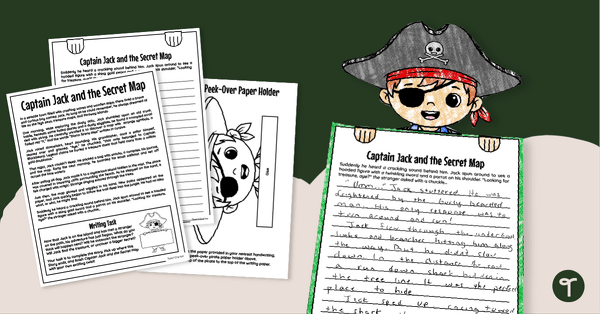
Finish the Pirate Adventure Story - Book Week Writing Template
Turn Book Week into a writing adventure with a printable Pirate Adventure-Themed Book Week Writing Template.
- Plus Plan

Write An Adventure Story - Digital Writing Activity
Teach your students to plan and write an Adventure Story with an interactive digital writing activity.
- Plus Plan
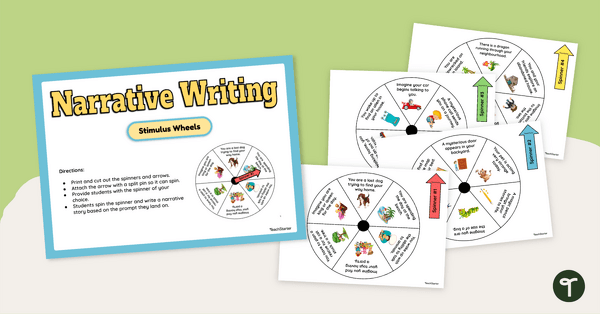
Writing Prompt Wheel Set
Download this writing prompt wheel set to give your students access to dozens of fun story starters.
- Plus Plan

Digital Storytelling PowerPoint Templates
Use this set of PowerPoint templates to foster creativity and explore digital storytelling with your students.
- Plus Plan
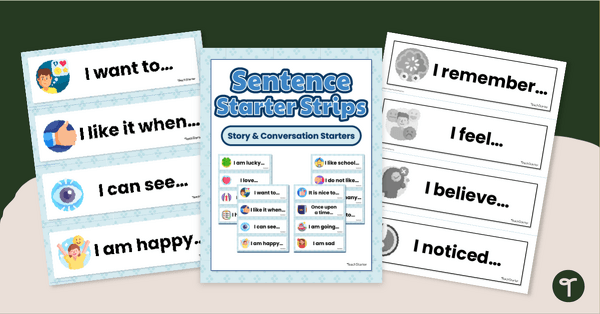
Sentence Strip Activity Cards - Simple Sentence Starters
Encourage conversation and writing with our Printable Sentence Starter Prompts for Early Years.
- Plus Plan
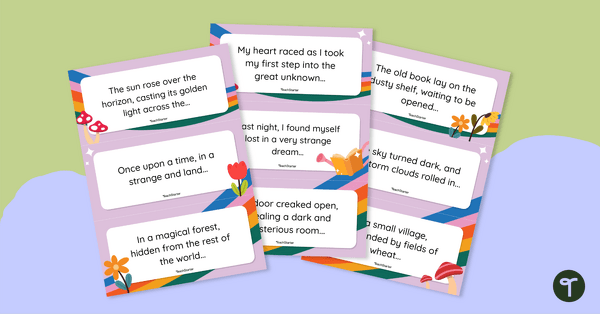
Inspiring Story Starters Task Cards
Get your students writing inspiring stories with this set of story starter task cards.
- Plus Plan
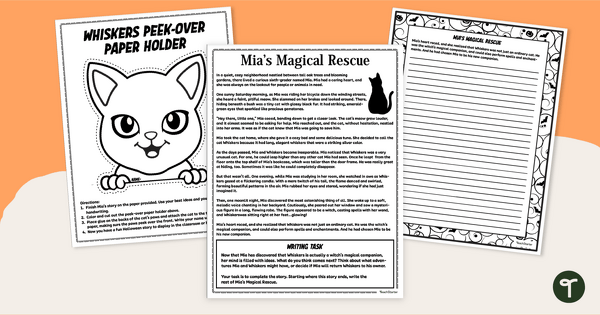
Halloween Narrative Writing Prompts — Finish the Story Writing Activity
Use this printable 'Finish the Story' writing prompt and craft to develop narrative writing skills this Halloween season.
- Plus Plan
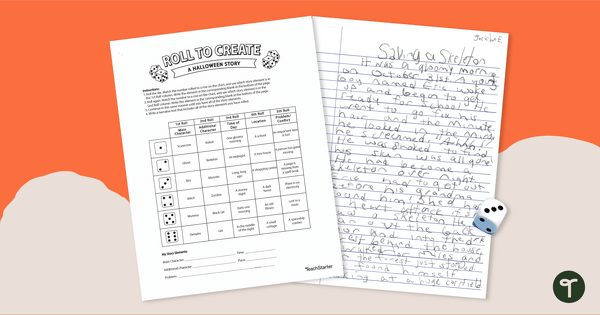
Halloween Roll-a-Story Dice Game
Spark spooky creativity with this Halloween Roll a Story game that helps students generate exciting writing prompts while making narrative writing fun and engaging.
- Plus Plan
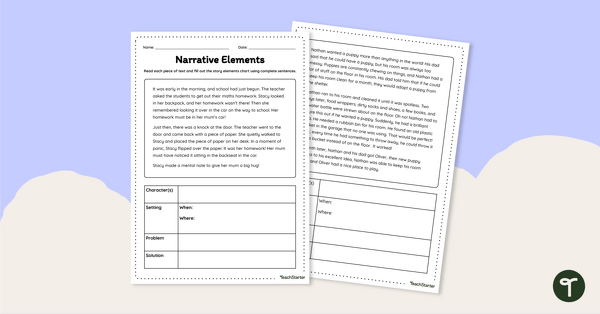
Narrative Elements - Worksheet
Practise identifying characters, settings, problems and solutions in fictional texts with this set of worksheets.
- Plus Plan
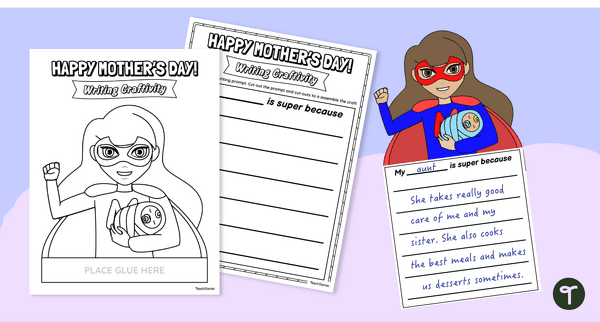
Happy Mother's Day Writing Prompt - Super Mum Craft Template
Celebrate the women in your students’ lives with a Happy Mother's Day Writing Prompt and Craft to show them just how “Super” they really are!
- Plus Plan
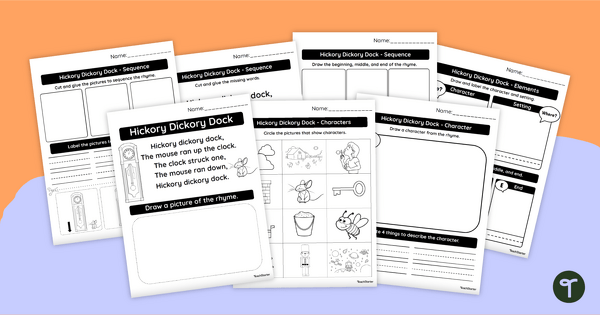
Narrative Features Worksheets - Hickory Dickory Dock
Identify characters, settings and parts of a story with early years reading worksheets featuring the Hickory Dickory Dock nursery rhyme.
- Plus Plan
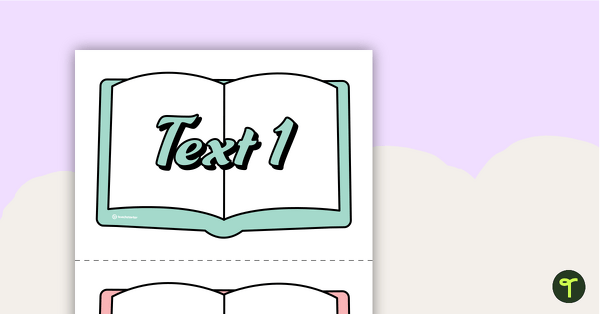
Narrative Writing Bump It Up Wall – Year 2
A visual display for your classroom to help students ‘bump up’ their narrative writing.
- Plus Plan
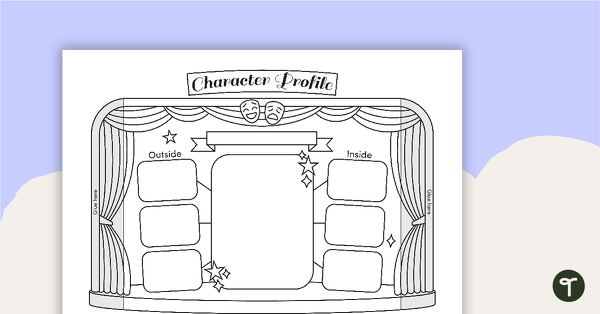
Book Character Profile - Stage and Curtains
A fun book character profile worksheet set on a stage.
- Plus Plan
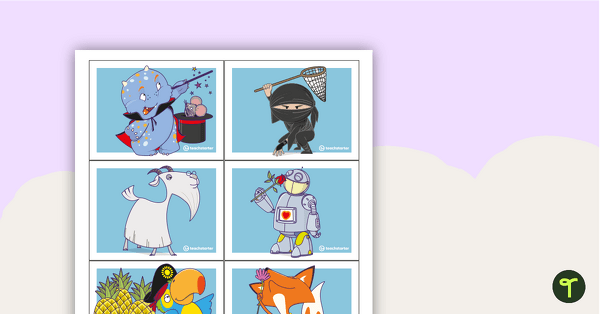
Alphabet Characters Story Generator Cards
A set of cards using alphabet-related image prompts for writing.
- Plus Plan
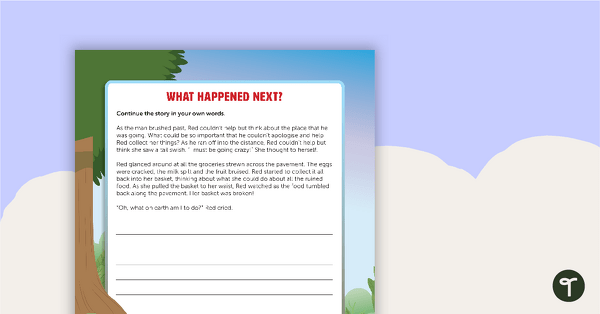
What Happened Next? Little Red Riding Hood Writing Template
Finish the Little Red Riding Hood story in your own words.
- Plus Plan
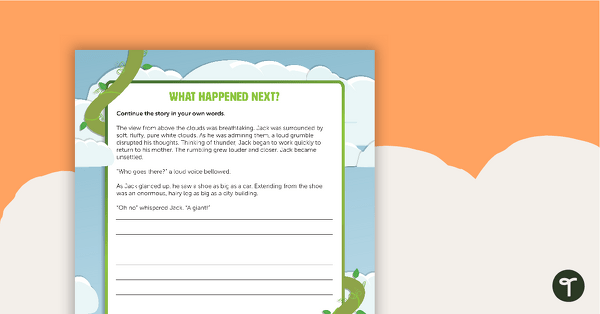
What Happened Next? Jack and the Beanstalk Writing Template
Finish the Jack and the Beanstalk story in your own words.
- Plus Plan

What Happened Next? The Gingerbread Man Writing Template
Finish The Gingerbread Man story in your own words.
- Plus Plan
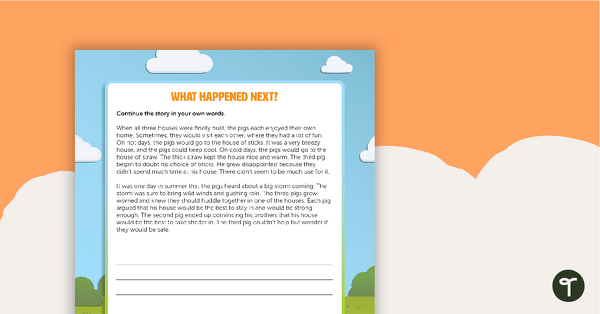
What Happened Next? The Three Little Pigs Writing Template
Finish The Three Little Pigs story in your own words.
- Plus Plan
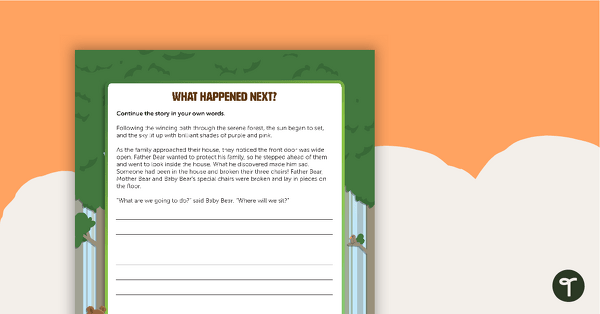
Goldilocks and The Three Bears - Finish the Story Writing Prompt
Finish the Goldilocks and the Three Bears story in your own words.
- Plus Plan
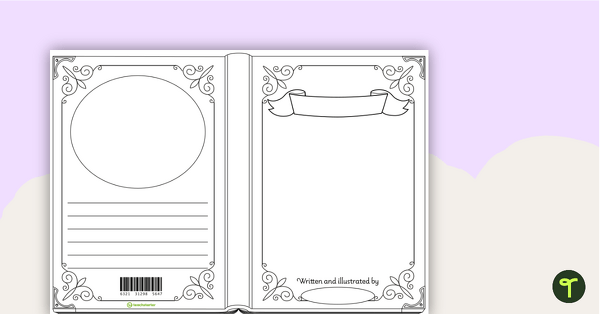
Narrative Booklet Template – Storybook Theme
A storybook-themed booklet for students to use when publishing their narrative texts.
- Plus Plan
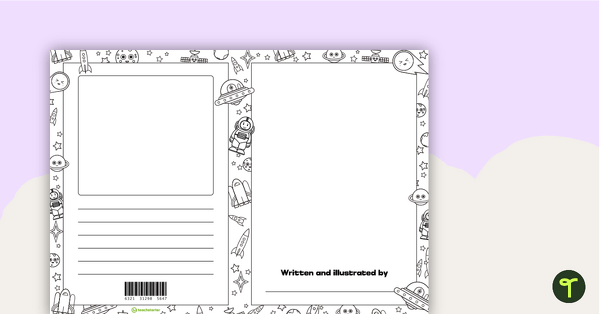
Narrative Booklet Template – Space Theme
A space-themed booklet for students to use when publishing their narrative texts.
- Plus Plan
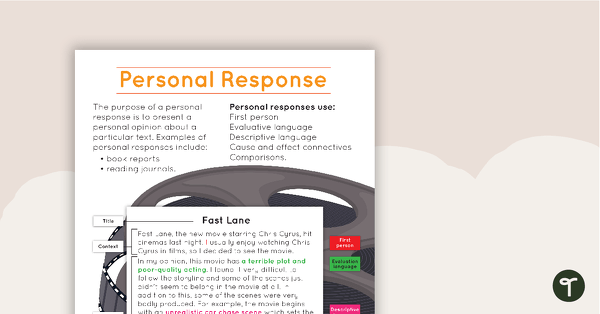
Personal Response Text Type Poster With Annotations
A poster about personal responses, including an annotated example.
- Plus Plan
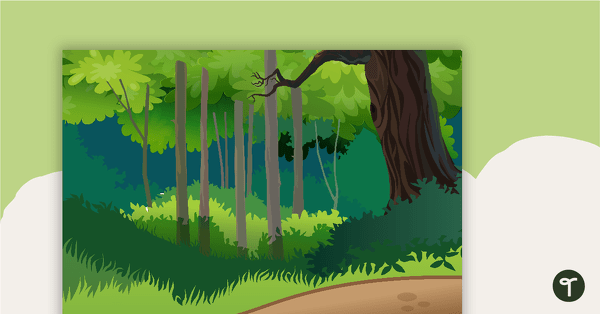
Fairy Tales Settings Posters
A set of 6 fairytale story settings background posters.
- Plus Plan
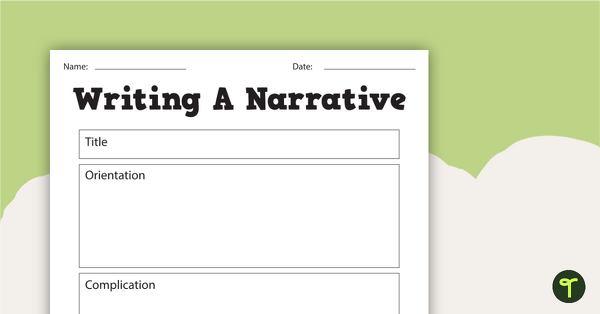
Narrative Writing Pack
A narrative writing teaching pack containing 9 worksheets and posters.
- Plus Plan
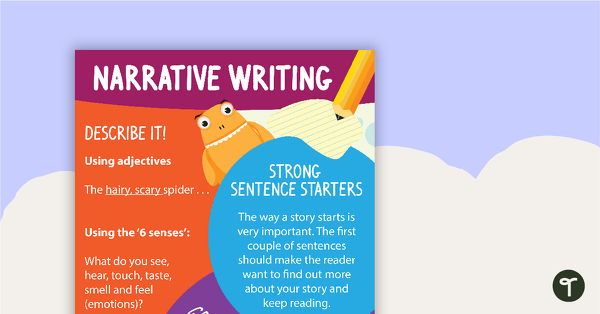
Narrative Writing Poster
A poster to encourage your students to think about narrative writing.
- Plus Plan
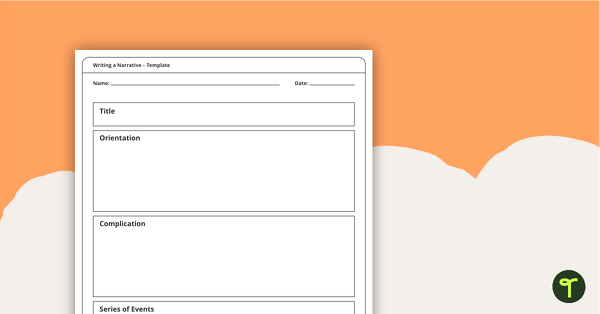
Writing a Narrative – Template
A template for students to use when planning a narrative text.
- Plus Plan
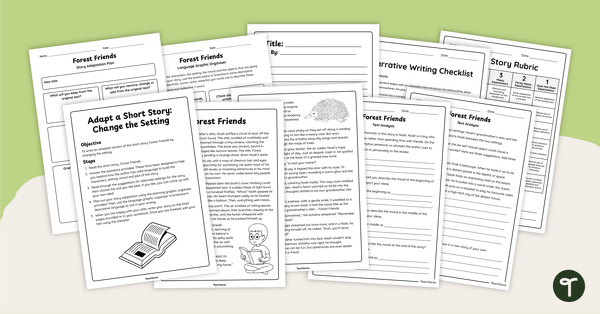
Adapt a Short Story – Change the Narrative Setting
Explore the role the narrative setting plays within a story with this engaging and fully scaffolded writing project booklet for primary students.
- Plus Plan
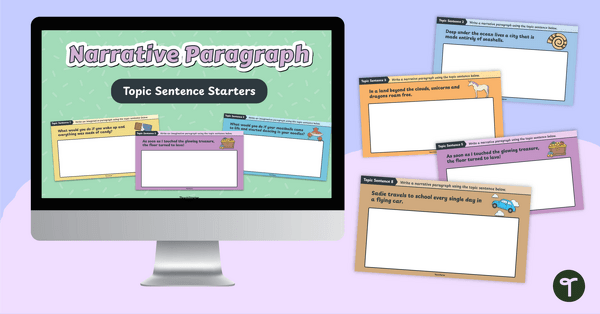
Narrative Paragraph Topic Sentences – Digital Template
Discover narrative paragraph topic ideas designed to inspire creativity and help students confidently write engaging narrative paragraphs.
- Plus Plan
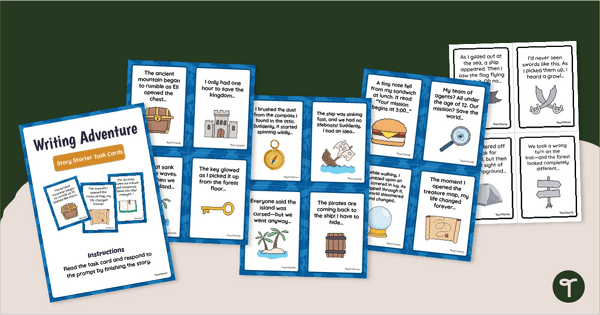
Adventure Story Starter Task Cards
Print and use these Adventure Story Starter Task Cards to inspire adventurous narrative writings during Book Week.
- Plus Plan
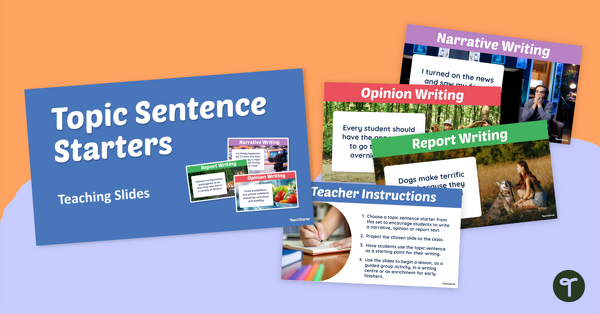
Topic Sentence Starter Examples Slideshow
Spark creativity with this topic sentence starter examples slideshow that provides your students with writing prompts across three writing genres.
- Plus Plan
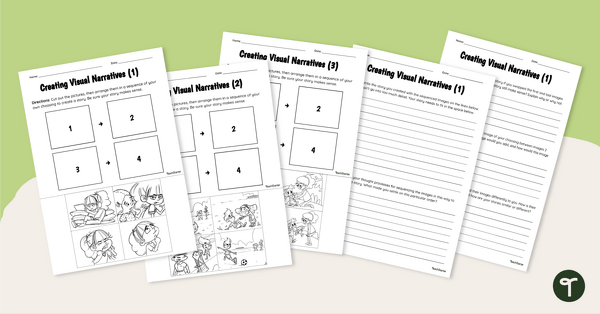
Visual Narrative Worksheets
Download these visual narrative worksheets that help students create and analyse their own stories using sets of images.
- Plus Plan
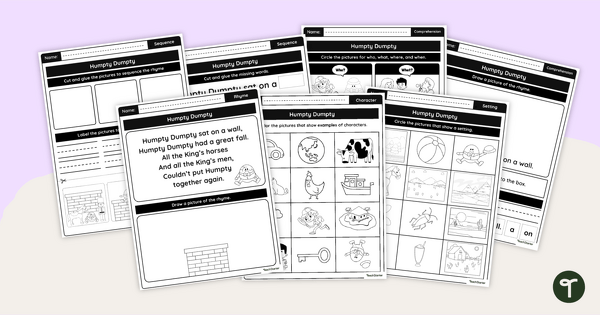
Narrative Features Worksheets - Humpty Dumpty
Identify characters, settings and parts of a story with early years reading worksheets featuring the Humpty Dumpty nursery rhyme.
- Narrative Writing Templates
- Narrative Writing Worksheets
- Narrative Writing Posters
- Narrative Writing Teaching Presentations
- Narrative Writing for Foundation Year
- Narrative Writing for Year 1
- Narrative Writing for Year 2
- Narrative Writing for Year 3
- Narrative Writing for Year 4
- Narrative Writing for Year 5
- Narrative Writing for Year 6